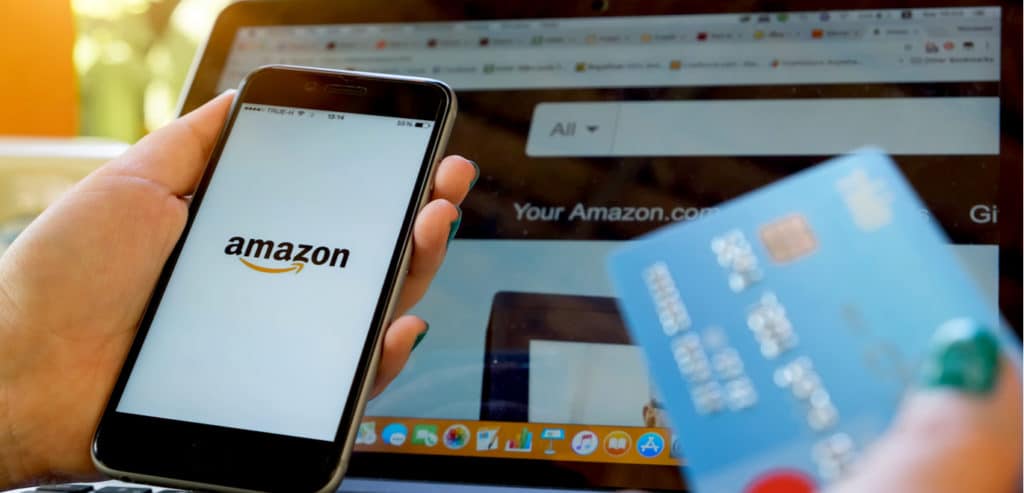Amazon.com Inc.’s fifth-annual Prime Day sales event is over—and, once again, it was the largest shopping event in Amazon history.
As in past years, Amazon did not disclose complete sales figures for Prime Day 2019 but offered a few hints. For example, Amazon says sales during the two-day event held July 15 and 16, surpassed those of the Black Friday and Cyber Monday 2018 combined.
Members of the Amazon Prime loyalty program across 18 countries shopped the 48-hour Prime Day event and purchased more than 175 million items, Amazon says. Those purchases include products from third-party sellers, most of which are independent small and medium-sized businesses that sell on the Amazon marketplace. Prime Day sales for marketplace sellers “far exceeded” $2 billion, Amazon says.
Top-selling Prime Day items worldwide were the Echo Dot, the Fire TV Stick with Alexa Voice Remote and the Fire TV Stick 4K with Alexa Voice Remote. In the U.S., the top sellers were the LifeStraw Personal Water Filter, Instant Pot DUO60 and 23andMe Health + Ancestry DNA-testing kits, Amazon reports.
Prime Day always leads to a surge in signups for the Amazon Prime loyalty program, as shoppers seek to take advantage of members-only deals. This year’s Prime Day was no exception. On July 15, Amazon signed up more new members of its Amazon Prime loyalty program than on any previous day and nearly matched that record on July 16. Those two days were the biggest days ever for Prime member signups, the retailer says. Prime members spend more than twice as much on the site each year than non-Prime members, according to Consumer Intelligence Research Partners.
Prime Day hot takes
Analysts will pick through the data for weeks to come, but here’s what Internet Retailer knows already about Prime Day 2019:
- Amazon’s sales likely soared: For the full two days, Internet Retailer projects Amazon—No. 1 in the Internet Retailer 2019 Top 1000—will have sold more than $6 billion worth of goods on Prime Day. That performance would be a 46% increase over Prime Day 2018, which was a 36-hour sales event. In the U.S. The online market intelligence firm Coresight Research estimates Amazon’s Prime Day sales will total $5.8 billion.
- Prime Day wasn’t perfect: Amazon avoided repeating the widespread technical glitches it suffered in 2018. However, on the first day of Prime Day, some customers were briefly unable to add items to their shopping carts. That problem might have caused some consumers to abandon their purchases. Also, the Wall Street Journal found some customers were upset by shipping delays and expressed their frustrations on social media.
- Overall, Amazon’s websites performed well: During Prime Day, Amazon’s mobile and desk websites loaded at speeds comparable to those recorded before the event started, analytics company Catchpoint Systems Inc. says. “Despite the heavy Prime Day traffic, over the past 48 hours Amazon’s website loaded faster than Walmart’s, with flawless availability. They’re using their huge infrastructure to its full advantage. Shrugging off last year’s problems, Amazon once again has set the e-commerce standard for a stellar user experience,” says Catchpoint CEO Mehdi Daoudi.
- It helped drive sales gains for other big retailers: Large retailers (those that make $1 billion or more in annual revenue) had a 64% increase in online sales on Monday compared with a typical Monday, according to data from Adobe Analytics. On Tuesday, the gain was 72% compared with an ordinary Tuesday, while the increase over the entire period was 68%, Adobe finds. July 16 also became the fourth day ever—outside of the holiday season—to surpass $2 billion in U.S. online sales.
- Small e-retailers cashed in: Across the two days, niche retailers (those with sales below $5 million per year) saw online sales grow 28% compared with a typical Monday and Tuesday period, Adobe found.
- Amazon was the big winner: Online shoppers spent more than 10 times as much money on Amazon in the first day of Prime Day than they did on Walmart and eBay combined, according to e-commerce research company Edison Trends. Sales in the first 24 hours were up 53% compared to the same period of last year’s Prime Day, Edison said.
Several major retailers, including Walmart Inc. (No. 3), Best Buy Co. Inc. (No. 13), Target Corp. (No. 16) and eBay Inc. (No. 5 in the ranking of Internet Retailer Online Marketplaces) launched competing sales before and during Prime Day. Those events helped boost overall U.S. online spending.
“Prime Day has become an indisputable summer shopping holiday,” says Jason Woosley, vice president, commerce product and platform at Adobe. Prime Day can help Amazon’s competitors, especially retailers that use good email campaigns to attract shoppers or offer value-added services such as buy online pick up in-store, he says.
Brands that delivered excellent email experiences saw a 52% boost in revenue throughout the two days, while those that lacked a good email strategy saw only a 23% lift, Adobe says. Buy online and pick up in store order values were $126 on Tuesday and $131 on Monday for Prime Day 2019.
Prime Day has developed a “halo effect” that helps large retailers reap the benefits of the sales event if they offer significant discounts, Woosley says. “This suggests that people are comparison shopping more than ever and will open their wallets to those who offer the best deals, regardless of the size of the retailer,” he says.
Adobe builds its retail reports on an analysis of 1 trillion website visits to over 4,500 retail sites and 55 million SKUs. Adobe measures transactions at 80 of the top 100 retailers on the web in the Internet Retailer Top 1000, according to Adobe.
Bloomberg contributed to this report.
Favorite